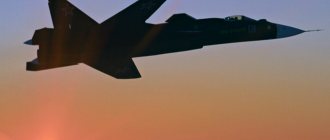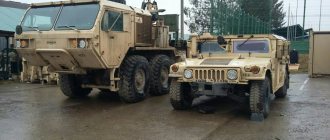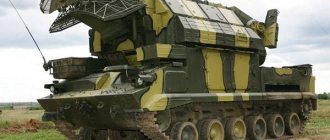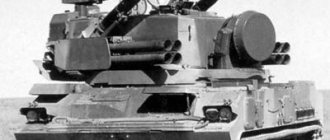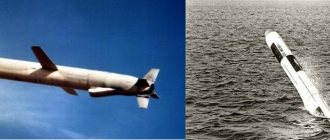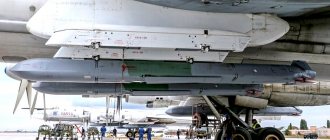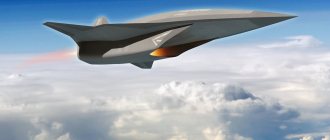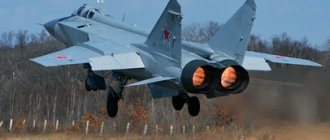| Golden eagle | |
| Type | carbine |
| A country | Russia |
| Production history | |
| Constructor | V.P. Gryazev[1] |
| Manufacturer | Instrument Design Bureau |
| Years of production | 1998 — |
| Characteristics | |
| Length, mm | 1129 |
| Barrel length, mm | 620 |
| Width, mm | 56 |
| Height, mm | 183 (without optical sight) |
| Cartridge | .308 Win[d] |
“Berkut”
is the name of a series of self-loading hunting carbines developed by the Tula Instrument Design Bureau for commercial and amateur hunting of medium and large animals. Serially produced since 1998.
In 2000, the carbines were awarded the Gold Quality Mark and the Platinum Quality Mark (Moscow, 2000)[2]
Description[ | ]
The carbine's automatic operation works by removing powder gases from the barrel. The barrel is locked by a bolt with four lugs.
The barrel is welded into the receiver, the bore is chrome-plated. On the carbines of the first series, the front sight was located at a distance of 57 mm from the muzzle, and in the front part of the barrel there was a thread for installing a flash suppressor (closed by a sleeve). On the later version there is no thread, and the front sight is moved to the end of the barrel and is located 5 mm from the muzzle.
The weapon can easily be disassembled into two parts, which fit into a compact case or cover, which ensures ease of use, storage and transportation. At the same time, a special fuse prevents fire when assembled loosely, which ensures safety in handling it.
The fuse is a flag safety, located on the right and left sides of the receiver near the trigger guard. The trigger mechanism is unregulated.
Berkut carbines have detachable box magazines that allow you to quickly load or unload the weapon.
Mechanical sights - non-adjustable front sight and reversible rear sight for shooting at 150 and 300 m.
All models have the ability to install an optical sight.
All carbine models can be equipped with either a frame stock or a classic wooden stock. A rubber recoil pad can be installed on the buttstock.
Su-47 power plant
The experimental version was equipped with two D-Z0Fb turbojet engines located in the rear of the fuselage. Next, it is planned to equip the fighter with AL-41F engines, which have a thrust vector control system. The air intakes are unregulated, have a cross-sectional shape close to a circular sector, and are located under the wings. The shape of the air channels is S-shaped, this allows shielding of turbofan compressor blades. On the upper area of the fuselage there are two flaps that additionally suck in air during maneuvering, takeoff and landing of the aircraft.
Options and modifications[ | ]
- "Berkut-1"
is a model chambered for 7.62x39 mm, with a 10-round magazine. Production has been discontinued. - K-93 "Berkut-2"
and
"Berkut-2-1"
- a model chambered for 7.62x51 mm cartridge, with a 5-round magazine. - K-93-1 "Berkut-2M"
- a model chambered for 7.62×54 mm R, equipped with a 5- or 10-round magazine[3]. The rifling stroke length is 260 mm. - "Berkut-3"
and
"Berkut-3-1"
- a model chambered for 9x53 mm R cartridge, with a 5-round magazine. - “Berkut-4”
is an experimental piece carbine chambered for 7.62x51 mm, made according to the bullpup design by gunsmith designer V.P. Gryazev.
Made in 2004 as a gift[4], it was presented to M.T. Kalashnikov, and is on display at the Military Historical Museum of Artillery, Engineering Troops and Signal Corps[5]. Another copy is in the private collection of the famous weapons collector and hunter M.V. Gulyaev, Voronezh [ source not specified 847 days
].
Photo of S-25 Berkut air defense system
The vertical antenna of the B-200 station of the S-25 “Berkut” complex is designed to view the airspace in the elevation plane.
Control room of the S-25 complex. In the center is the senior operator's console, on the sides are the workstations of guidance and launch operators, and in the background are air situation tablets.
Target based on the 5YA24 rocket
Similar
S-75 air defense systems Dvina, Desna, Volkhov. Compound. Rockets. Damage range
S-350E Vityaz air defense system. Compound. Rockets. Damage range
ZRPK Pantsir-S1. Armament. Price. Detection range
ZSU-23-4 Shilka. Rate of fire. Armament. Dimensions. Weight
ZRK 2K12 KUB. Damage range. Rocket speed. Principle of operation
ZSU 2S6M Tunguska-M. Damage range. Rockets. Compound. Dimensions
OSA-AKM air defense missile system. Firing range. Rockets. Compound. Dimensions. Weight
SAM S-200 Angara, Vega, Dubna. Damage range. Compound. Principle of operation
SAM Buk-M1-2. Detection and destruction range. Rockets. Possibilities
MANPADS Verba. Damage range. Rocket. Composition of the complex
S-400 Triumph air defense system. Damage range. Rockets. How does it work
SAM S-300PMU2 Favorite. Damage range. Compound. Rockets
SAM 9K331 Tor-M1. Damage range. Rocket. Principle of operation
MANPADS 9K310 Igla-1. Damage range. Weight. Possibilities
SAM S-125 Neva (Pechora) Range and height of destruction. Rockets
SAM Sosna. Armament. Damage range. Rockets. Compound
SAM 9K35 Strela-10. Damage range. Modifications. Rockets
SAM S-25 Berkut. Range and altitude of damage. Rockets
Naval air defense missile system Dagger. Damage range. Compound. Rockets. On what ships is it installed?
ZRK 2K11 Circle. Damage range. Modifications. Compound
American Patriot air defense system. Damage range. Compound. Rockets
Anti-aircraft gun ZSU-57-2. Armament. Dimensions. Booking
KTPU "Gibka" (3M-47) Damage range. Rockets. Principle of operation
MANPADS 9K34 “Strela-3”
"Osa-M" - shipborne anti-aircraft missile system
S-300V (9K81) – anti-aircraft missile system
9S482M7 (PU-12M7) – battery mobile control station
SAM "Avenger" - American mobile anti-aircraft missile system
FIM-92A Stinger - American MANPADS
MANPADS 9K32 “Strela-2”
MD-PS – anti-aircraft missile system
SAM M-1 "Volna" (4K90) - ship-based anti-aircraft missile system
ZSU-37 – self-propelled anti-aircraft gun
You have no rights to post comments
Notes[ | ]
- In memory of the outstanding designer. Vasily Petrovich Gryazev, an outstanding gunsmith designer, died at the age of 81. / official website of the Tula Instrument Design Bureau
- Self-loading carbines BERKUT / official website of the Tula Instrument Design Bureau
- it is also possible to use 10-round magazines from the SVD sniper rifle and the Tiger carbine
- In TsKIB SOO // magazine “Master Gun”, No. 4 (85), April 2004. p.5
- On September 19 at 15.00 at the Military Historical Museum of Artillery, Engineering Troops and Signal Corps there will be a grand opening of a new exhibition (inaccessible link) (official website of the Military Historical Museum of Artillery, Engineering Troops and Signal Corps)
Tactical and technical characteristics of the S-25 Berkut air defense system
– Years of operation: 1955 – 1982- Adopted into service: 1955- Designer: Lead developer - KB-1
Characteristics of the 1955 model system
- Target speed: 1500 km/h - Hit altitude: 5.0-15 km - Range: 35 km - Number of targets hit: 20 - Number of missiles: 60 - Possibility of hitting a target in interference: no - Missile storage life: on the launcher — 0.5 years; in stock - 2.5 years
Characteristics after modernization in 1966
- Target speed: 4200 km/h - Hit altitude: 1500-30000 m - Range: 43 km - Number of targets hit: 20 - Number of missiles: 60 - Possibility of hitting a target in interference: yes - Missile storage life: on the launcher - 5 years; in stock - 15 years
All-terrain vehicle Berkut-8 characteristics
The length of the all-terrain vehicle is 6.8 meters, width 2.5 meters, and height 2.5 meters, while the height of the loading platform itself without a trailer or cargo installed on it is only about 1.2 meters.
"Berkut-8" is equipped with powerful wheels with low-pressure tires, the diameter of which is 1.45 meters. At the same time, the ground clearance of the car is 76 centimeters, and the track width is 1.5 meters. In many ways, it is the massive wheels and high ground clearance that provide this all-terrain vehicle with a very high level of cross-country ability.
The all-terrain vehicle moves without problems through wetlands and swamps themselves, broken and washed-out dirt roads, and deep snow. On hard, dry ground when fully loaded, the all-terrain vehicle is capable of climbing inclines of up to 35 degrees.
Among other things, the Berkut-8 is also an amphibian, so it can easily overcome water obstacles without any additional equipment. At the same time, it is not afraid of either strong currents or headwinds. Moreover, the all-terrain vehicle is capable of independently getting out of the water even on gently sloping, washed-out and littered shores.
Thanks to all these features, the machine can be successfully used at any time of the year: in the harsh snowy winter, in the spring or autumn thaw, and in the hot summer - it will never let you down.
Much of the technical “stuffing” of the “Berkut-8” was inherited from the famous Russian cars VAZ and GAZ. Thus, the swamp vehicle is equipped with a diesel engine from a VAZ-21213 with a power of 83 hp. The Berkut also got a five-speed manual transmission from VAZ, only a different model - 2107. In turn, from the Niva the all-terrain vehicle inherited a three-shaft transfer case with two gears - low and high. In addition, he got a tubular-plate double-row radiator from the GAZ-3302 and a rear axle gearbox with forced locking from the UAZ Spicer.
The maximum speed that the Berkut-8 all-terrain vehicle can reach when fully loaded on a straight road is 40 kilometers per hour, but on water it moves at a speed of 4 kilometers per hour.
At the same time, Berkut-8 can transport a maximum of eight people. The cabin can accommodate the driver and one passenger, with six more people riding in the passenger section. The all-terrain vehicle is equipped with everything necessary, and the seats in the rear compartment can be converted into sleeping places.
"Berkut-8" farts, located in Tyumen. This all-terrain vehicle is especially in demand in those areas where increased requirements for cross-country ability are imposed - in geological exploration, oil and gas exploration and others.
Su-47 design
The Su-47 aircraft is configured according to the design of an integral unstable triplane, which has a high-mounted forward-swept wing and a centrally rotating rear tail unit of a small area. The aircraft has the ability to perform dynamic braking at various speeds at an acceptable angle of attack.
During the production of parts, a new technology was used: the cladding parts could be obtained in a flat form, then they were given the necessary shape, curvature, and joined with the required accuracy. Thanks to large-sized panels, it was possible to reduce the number of fasteners in the structure. This reduced the weight of the fighter, increased aerodynamic characteristics and reduced the aircraft's visibility on radar.
The design included composite materials for self-unloading and self-adapting structures. Most of the elements (on-board systems, landing gear, canopy) were taken from production Su-27 aircraft.
The wing of the Su-47 has a forward sweep and is 90% made of composite materials. Has a folding front console. The surface of the wing console is equipped with a deflecting nose, and on the rear surface there is an aileron and a single-section flap.
The fuselage structure is mainly made of titanium and aluminum alloys. It has a nearly oval cross-section. The nose cone is flattened at the front and has fins. The tail section is occupied by two fairings, which can be used in the future to accommodate radio-electronic devices.
The vertical tail is similar in design and execution to the Su-27, but is smaller in area than its predecessor. The camber of the keels is directed to the periphery; together with the small area of the aircraft, the device becomes poorly visible to radar instruments.
Judging by the canopy, the glider resembles a Su-27 aircraft. The angle of inclination of the pilot's seat wall is 30°, this protects him from overloads during aerobatic maneuvers and combat maneuvers.
One wheel is attached to the main landing gear. The main pillars are cleaned into niches located on the sides of the air intake. The front strut is retracted into the fuselage by turning forward.
SAM S-25 Berkut. Range and altitude of damage. Rockets
S-25 “Berkut”. In the late 1940s and early 1950s, the Soviet Union began one of the most complex and expensive programs of the early Cold War, second only to its nuclear weapons program. In the face of a threat from the strategic bomber forces of the United States and Great Britain, J.V. Stalin ordered the creation of an air defense missile system controlled by a radar network to repel possible massive air attacks on Moscow. The Moscow system was followed in 1955 by a second program aimed at protecting Leningrad.
